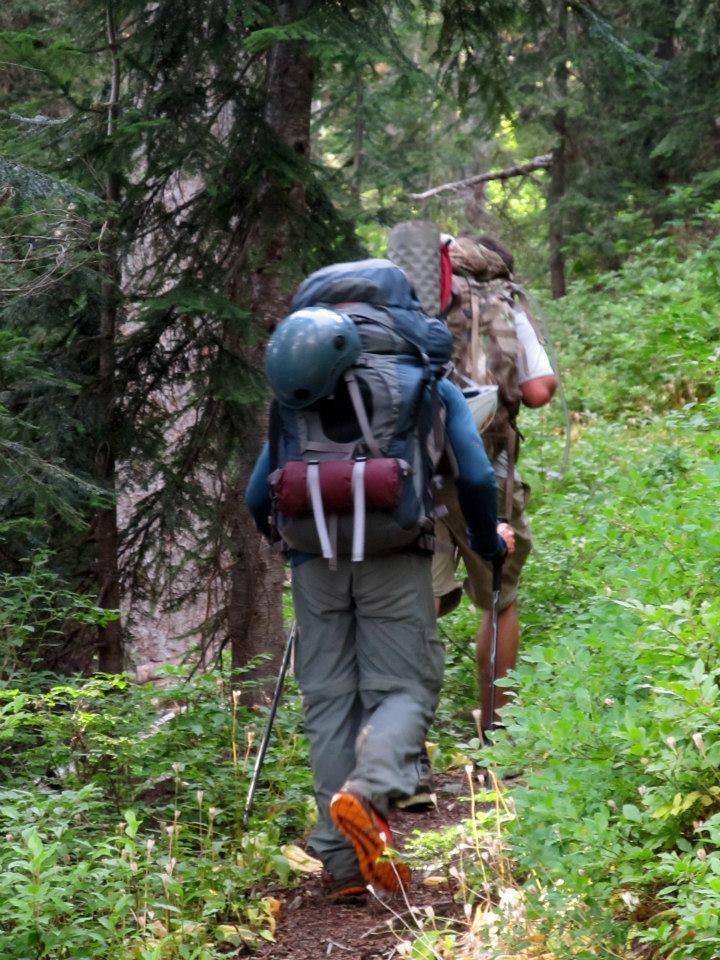Main Menu

Heather Anderson is a National Geographic Adventurer of the Year, three-time Triple Crown thru-hiker, and professional speaker whose mission is to inspire others to “Dream Big, Be Courageous.” She is also the author of two hiking memoirs Thirst: 2600 Miles to Home and Mud, Rocks, Blazes: Letting Go on the Appalachian Trail and a preparatory guide to long-distance hiking Adventure Ready. Find her on Instagram @_WordsFromTheWild_ or her website wordsfromthewild.net
Share This Article!


By: Heather Anderson
You’re a day into a four-day outing and you hear a muffled popping noise coinciding with the sudden redistribution of the weight of your backpack…Your shoulder strap has just broken.
Gear failures in the backcountry happen to everyone at some point. Some are major, such as a broken pack strap. Others are minor such as a tear in your clothing. All backpackers should carry a few items for basic field repairs and tap into their inner MacGyver creativity when something goes awry. Below are a few ideas for repairing common problems as well as a suggested list of repair items to carry.
Few things will hold up to the stress of a broken shoulder strap. However, I’ve seen people have good luck with using a couple of locking diaper pins or utility cord to reattach it until you can get to town. Unfortunately, this is not an at home repair and you’ll need to contact the manufacturer or a professional gear repair company to get a real fix.

Trail running shoes are frequently prone to blowing out on the sides without much warning. One sharp rock can often slice them wide open. While you could use some utility cord or an extra shoelace to tie them shut, this will eventually wear through. Instead, I recommend preventatively smearing shoe goo or seam seal on tear prone areas (like the side of the upper and the toe). This extra buffer can really help prevent disaster in the backcountry.
Nearly any fabric tear, whether it’s the seat of your pants or holes in the rain fly of your tent, can be repaired with Tenacious Tape. I use this stuff for patching nearly everything in the backcountry. It has long term adherence as well, even through laundering. I have several down bags and jackets that have been patch with Tenacious Tape for many years.
Water filters are notoriously finicky. Some cannot be exposed to freezing temperatures (I sleep with mine in my bag). Others can be damaged by getting dropped or mysteriously stop pumping water properly. Aside from cleaning them regularly at home and protecting them the best you can it’s important to carry a chemical backup treatment such as iodine or chlorine tablets.
At some point zippers fail. On everything from your rain jacket to your tent. I usually carry a few regular safety pins (in addition to the large diaper pins) to hold zippers closed if necessary. I’ve also taped jacket zips 2/3 shut creating an anorak when necessary.
I’ve broken quite a few trekking poles over the years. Unfortunately, they are essential to setting up my tent. Luckily, I’ve usually been hiking in a forested area and have been able to find a dead, yet sturdy, tree branch to use in their stead when it was time to camp. If you like the branch, you can keep it as a replacement trekking pole too!

Unfortunately, sometimes gear fails without any warning whatsoever leaving you scrambling to cobble something together. However, I highly recommend inspecting your gear at the beginning of each season, or before any long trip. Look for signs of weakness, wear, snagging zippers, etc. Do what you can to mitigate these issues before going out, such as cleaning and lubricating sticky zippers. For critical gear items that seem to be on their last legs, relegate them to light duty (or retire them altogether). This can go a long way toward preventing catastrophic fails in the middle of a long trip!
Backpacking Repair Kit Checklist:
- Dental Floss and needle (with an eye big enough for the floss)
- Mini super glue
- A few feet of Tenacious Tape (or duct tape)
- Mini knife with scissors
- Air Mattress repair kit (if you use one)
- A couple yards of utility cord
- Safety pins
- Large diaper pins
- Backup chemical water treatment
About the Author

Heather Anderson is a National Geographic Adventurer of the Year, three-time Triple Crown thru-hiker, and professional speaker whose mission is to inspire others to “Dream Big, Be Courageous.” She is also the author of two hiking memoirs Thirst: 2600 Miles to Home and Mud, Rocks, Blazes: Letting Go on the Appalachian Trail and a preparatory guide to long-distance hiking Adventure Ready. Find her on Instagram @_WordsFromTheWild_ or her website wordsfromthewild.net
Share This Article!




















